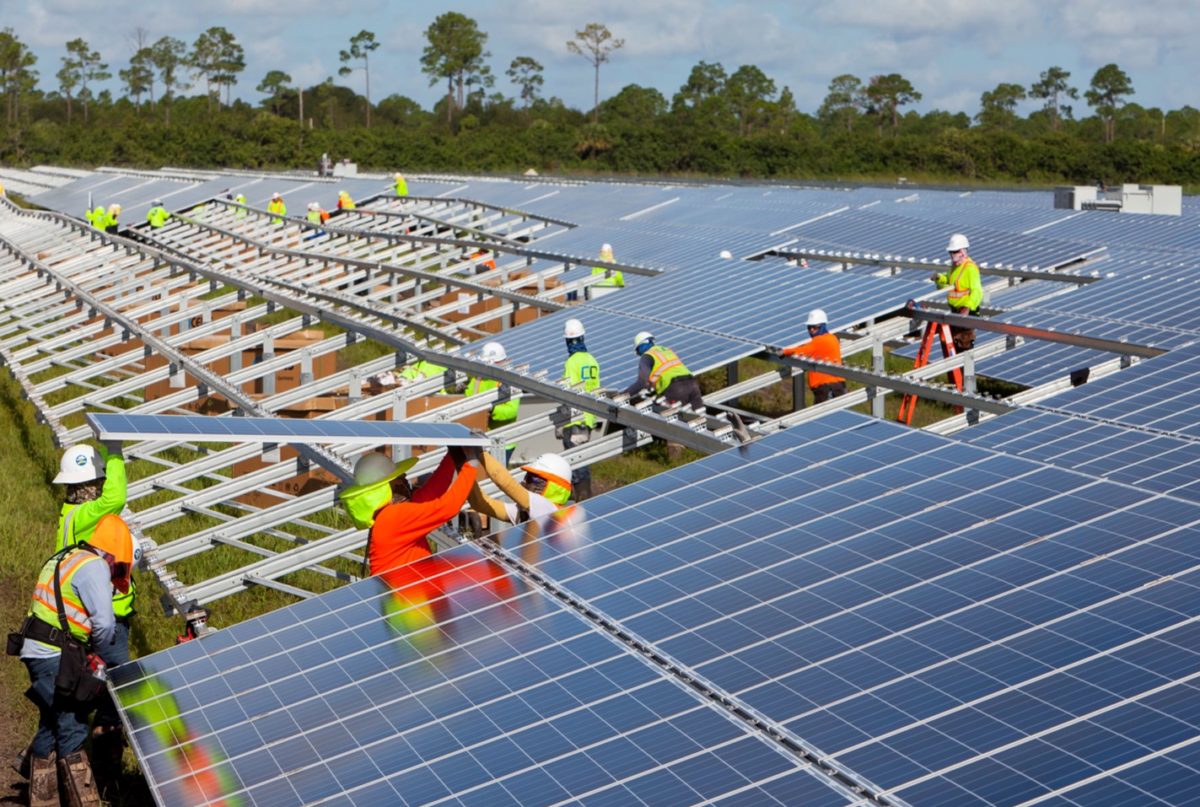From pv magazine USA
In a record year for the United States, 10 GW of utility-scale solar reached commercial operation date in 2020. The projects accounted for nearly 60% of all new PV capacity added last year.
Declining costs have been a chief driver of utility-scale solar growth, which has extended its reach beyond the sunny southwest to more northerly regions. Prices negotiated through power purchase agreements (PPAs) have fallen to new lows, and solar PPAs are now less costly than wind in many regions. As solar increases its share of the capacity on the grid, its wholesale value reduces.
However, this observed decline in value has kept pace with declining prices, meaning that solar has remained competitive. The growth prospects for utility-scale solar look strong, with interconnection queues adding 170 GW last year alone.
Those insights were shared by Lawrence Berkeley National Laboratory during this year’s online Solar Power International event. The Department of Energy laboratory drew its results from its database of 983 projects that have at least 5 MW of capacity, totaling 40.5 GW.
Downward trend
Falling costs remained the most significant driver of utility-scale solar deployment in the U.S. median installed costs have fallen in the last decade, down nearly by 75% since 2010.
Lower capital costs and higher capacity factors, along with reduced operating expenses, longer design life, and improved financing terms have driven down the levelized cost of electricity (LCOE) over the past 10 years. LCOE is a measure of the average net present cost of electricity generation for a generating plant over its lifetime.
LCOE has fallen 85% since 2010, to $34/MWh. If the federal investment tax credit of 30% is included, LCOE currently averages $28/MWh for utility-scale solar. PPA prices have followed LCOE reductions, falling about 85% since 2010. Most projects in the CAISO (California) grid and the non-ISO West are priced around $20/MWh. Elsewhere in the continental U.S., prices range from $30/MWh to $40/MWh.
Value erosion
While prices have fallen, the value of solar has also eroded over time. This is due in part to wholesale electricity market prices declining overall, largely driven by declining natural gas prices. Solar-specific causes such as location, generation profile, and curtailment have driven this decline as well.
Despite the decline in wholesale value, declining PPA prices largely have kept pace, maintaining solar competitiveness in the market. The loss of value in solar has shown some correlation with the resource’s overall share in the wholesale energy market. For example, in 2020, in CAISO (California’s grid) solar made up 21% of capacity and netted an average value of $25/MWh on the wholesale market, 30% below the average wholesale price. In contrast, solar was valued at $51/MWh where it made up less than 1% of the Southwest Power Pool (SPP) grid-control region (Nebraska, Kansas, Oklahoma).
Steady growth in utility-scale solar is expected to continue. About 460 GW of solar was in interconnection queues at the end of 2020, 170 GW of which were entered into the queues that year. Nearly 160 GW of the total queue include co-located battery energy storage, about 34% of the total. CAISO had the largest attachment rate in-queue, with nearly 90% of projects opting to include batteries.
What’s more, data reported by the Energy Information Administration showed that of the 14.5 GW of battery storage power capacity planned to come online in the United States from 2021 to 2024, around two-thirds will be co-located with a solar photovoltaic power plant.
This content is protected by copyright and may not be reused. If you want to cooperate with us and would like to reuse some of our content, please contact: editors@pv-magazine.com.




Likes Uganda floting solar power plant setup